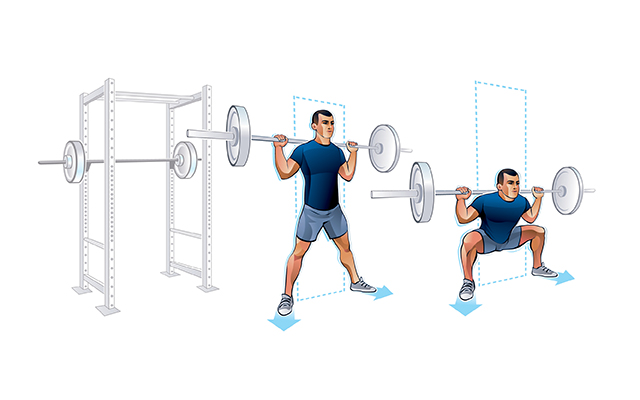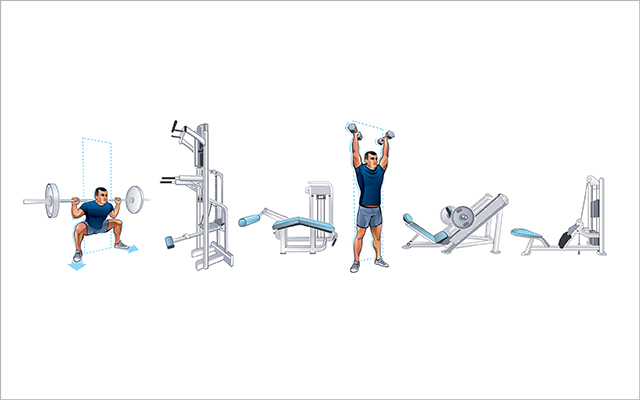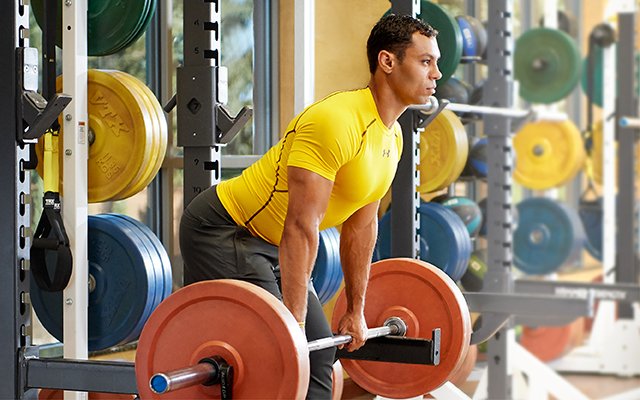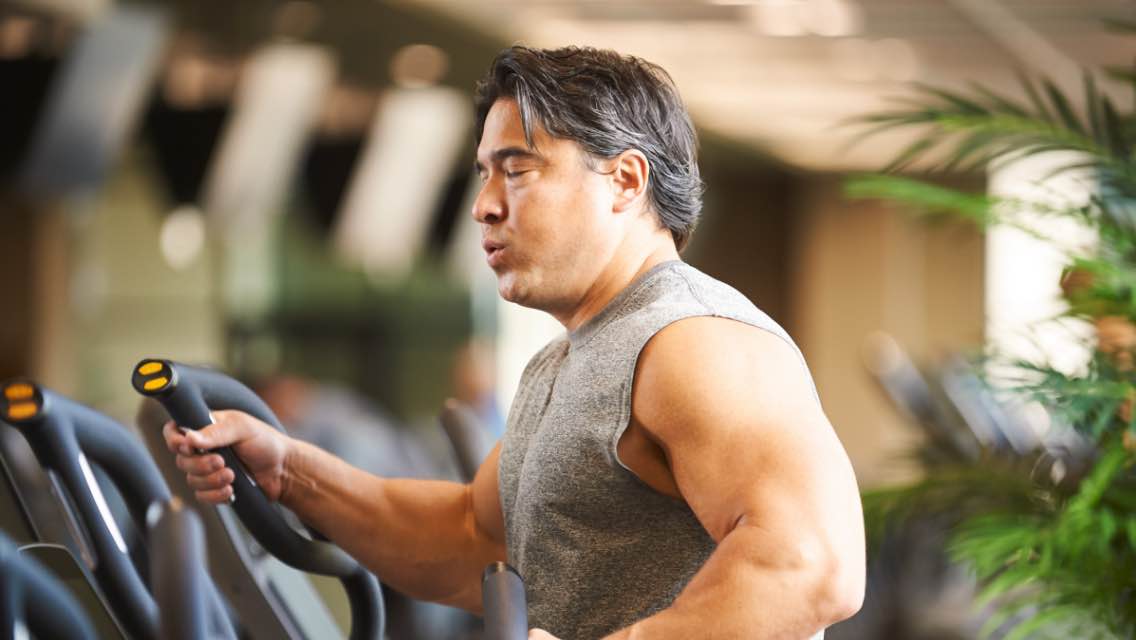Many strength trainers sing the praises of free weights, including barbells, dumbbells, and kettlebells — but that doesn’t mean machines don’t have their place. While they have limitations, machines can fill in key gaps in a weight-training program.
“When arguing for or against machines in a workout program, it’s seldom about whether a machine is good or bad. It’s really more about [being] appropriate or less appropriate,” explains Noah Gabriel-Landis, CSCS, PICP, OPEX, USA Weightlifting, owner of Priority:Strength online training.
He lists the following benefits of machines:
- Building up to a free-weight exercise. Machines can aid you in performing a movement pattern for which you may not currently have the requisite strength. For example, a chin-up or pull-up machine mimics the movement of a regular chin-up or pull-up (as does a lat pull-down machine), while adding variable assistance to help you gradually build your strength.
- Moving in different planes. Machines allow you to move weight in different directions. Belts and pulleys let you push down, pull laterally, and more, exposing you to a variety of movement patterns.
- Correcting imbalances. They help you overcome imbalances by training joint actions that are difficult to replicate otherwise. For instance, plenty of exercises work hip extension, but few train knee flexion as effectively as a leg-curl machine.
- Simplifying weight changes. Machines are ideal for workout formats that involve frequent changes to the load. It’s quicker and easier to adjust the pin in a weight stack than to add or remove barbell plates.
- Managing fatigue. They can extend a workout session when you are tired but want to continue training with an appropriately heavy load.
Gabriel-Landis designed the following full-body workout, which combines free weights with resistance machines in a useful, functional way. It features supersets that alternate between upper- and lower-body exercises, with just a short rest between sets.
The Plan
Complete the designated number of rounds for each superset before moving on to the next pair.
Weight selection: “Choose weights that account for the demanding tempo and short breaks between sets. The weight should be challenging, but only so challenging that it allows you to adhere to these important parameters,” says Gabriel-Landis.
He recommends leaving perhaps four or five reps “in the tank” for your first set. “So choose a weight that would allow you to lift 15 or 16 repetitions if you were doing just the one set.”
Perform A exercises as a superset, resting 45 seconds between each set for a total of four rounds.
Perform B exercises as a superset, resting 45 seconds between each set for a total of four rounds.
Perform C exercises as a superset, resting 45 seconds between each set for a total of three rounds.
The Workout
A1: Wide-Stance Back Squat
Note: If you don’t have access to a barbell, you can modify this exercise by squatting while holding a weight at your chest.

1. With the bar racked on your upper back, hands just beyond shoulder width, step your feet wider than your shoulders; turn your toes out.
2. Inhale as you slowly push your hips back and bend your knees, keeping them in line with your toes; lower to the bottom of a squat on a count of three. Throughout the movement, engage your core to stay upright through your torso and keep your ribs stacked over your hips.
3. From the bottom of your squat, exhale as you rise to standing.
4. Perform 10 to 12 reps.
A2: Assisted Pull-Up
1. On a pull-up machine, place your feet or knees on the counterweight lever. With hands just outside of shoulder width, grasp the bar or handles with an overhand grip.
2. With your core engaged, exhale and pull on the bar until your chin is completely over the top of it; keep your gaze forward. Pause at the top for a count of one.
3. Slowly lower on a count of two until your arms are fully extended at the bottom of the repetition.
4. Perform 10 to 12 reps.
B1: Lying Leg Curl
1. Set up the leg-curl machine so that your knees are in line with the pivot point and the pad is positioned behind both ankles.
2. With both legs, flex at the knees to curl the pad toward your hips. The rest of your body should stay perfectly still and stable.
3. Slowly extend at your knees on a count of five to return the pad to its starting position.
4. Perform six to eight reps.
B2: Dumbbell Push Press
1. Stand with dumbbells at shoulder height, holding them with a neutral grip (palms facing inward).
2. Load your hips by pushing your knees slightly outward, as if doing a mini-squat.
3. Exhale as you explosively extend your hips and knees to drive the dumbbells overhead. Stay engaged through your core to keep ribs stacked over hips and to avoid arching your back.
4. Inhale as you lower the weight on a count of two to the starting position at your shoulders.
5. Perform 10 to 12 reps.
C1: Leg Press
1. Set up the leg-press machine so your pelvis is neutral; place your feet about hip width apart.
2. Exhale as you press the weight up, keeping your knees tracking with your toes. Make sure not to overextend your knees at the top of the repetition.
3. Inhale as you lower the weight on a count of two. Keep your feet flat and your lower back in contact with the seat.
4. Perform 15 to 20 reps.
C2: Seated Row, Mid/Supinated
1. On a low-row machine, sit with your arms and legs fully extended and trunk upright. Grip the handle with palms facing upward.
2. Exhale as you begin to pull the handle toward your body as far back as possible without leaning back or flaring your ribs. You should feel your shoulder blades move toward each other at the end of the range.
3. Inhale and, on a count of two, reverse the movement with control until your arms are fully extended. Legs, hips, and trunk should remain still and stable.
4. Perform 12 to 15 reps.
This originally appeared as “Mix It Up With Resistance Machines.”




This Post Has One Comment
Good article. Helpful and gives some ideas on how to vary my workout.